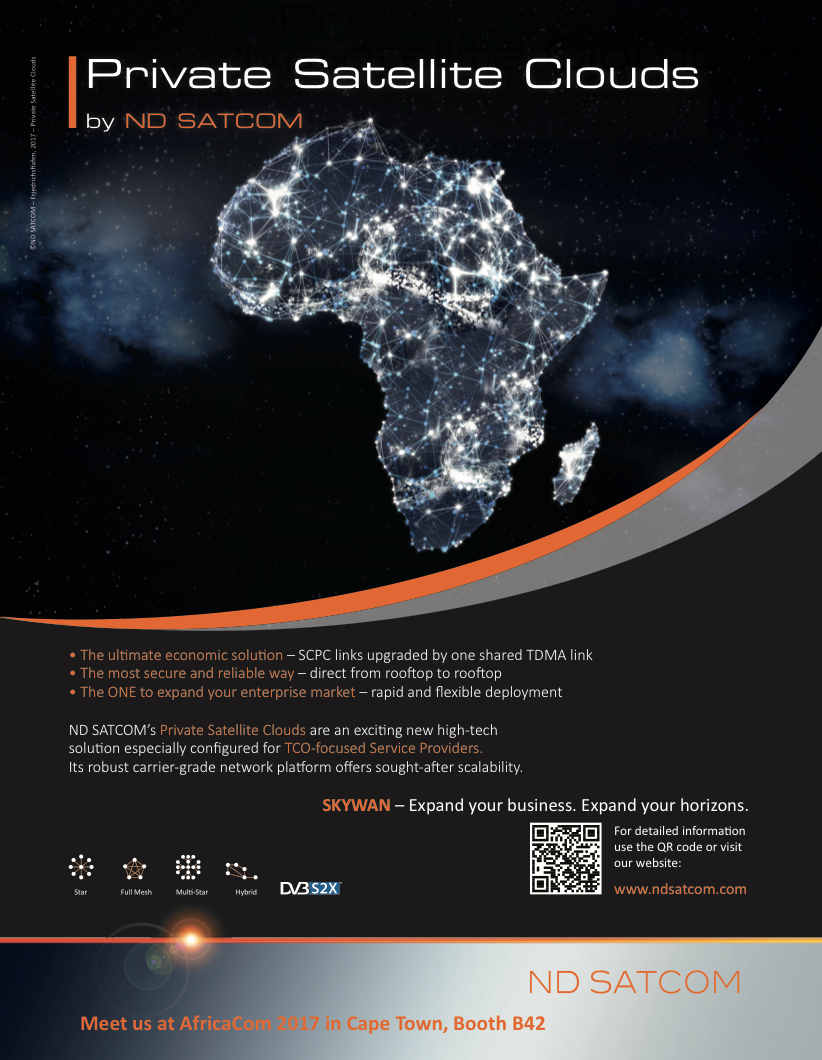2017 has been a most exciting year for the MHI space-related business endeavors — the company has accomplished several impressive events for H-IIA launch services activities as well as the H3 development progress. What may the future now hold for MHI?

by Dr. Ko Ogasawara
MHI’s Space Business in 2017
Let’s start with the H-IIA activities. MHI will be committed to a total of six (6) H-IIA Launch Service missions by the end of this year; the company has already made four (4) successful launches and the next two (2) missions are scheduled to occur during Q4 of 2017.
This is the highest number of launches MHI has accomplished in a single year. In addition to these successes, MHI was awarded a contract by Inmarsat in September for Inmarsat-6F1 Launch Services.
Mr. Rupert Pearce, the CEO of Inmarsat, stated that his firm believes that “MHI and its H-IIA launch vehicle offer a world-class service. With the development of the new H3 launch vehicle, it is clear that MHI is committed to continuing innovation, and these are attributes that we seek in our partners and we look forward to a long and fruitful relationship with MHI as one of our roster of launch partners.”
In regard to H3 developments, MHI has been proceeding forward as the Prime contractor. The H3 is focused on a more “customer-oriented” launch vehicle to satisfy various demands from domestic and international customers.
With support from the Japan Aerospace Exploration Agency (JAXA), H3 development has progressed well and as planned. By the close of this year, system CDR (Critical Design Reviews) of the H3 will be finalized and then the manufacturing, verification tests will start.
With the H-IIA heritage, such as the high success rate and Launch Schedule Assurance, MHI intends to fully expand the company’s space-related business with the upcoming H3 launch vehicle.
Launch Schedule Assurance
With the latest launch on August 19, MHI marked 35 consecutive successful launches that range from 2005 by the H-IIA and H-IIB with more than 97 percent success rate.
Along with the success rate, “Launch Schedule Assurance” (On-time Launch) is yet another characteristic MHI sticks to as the strength of the firm’s current H-IIA Launch Services. In fact, On-time Launch has been highly rated by MHI’s potential customers and has led to H-IIA Launch Services contracts.
Actually, MHI’s on-time launch rate from H-IIA Flight No.13 in 2007, when MHI initiated Launch Services, rises over 90 percent, excluding delays caused from bad weather.
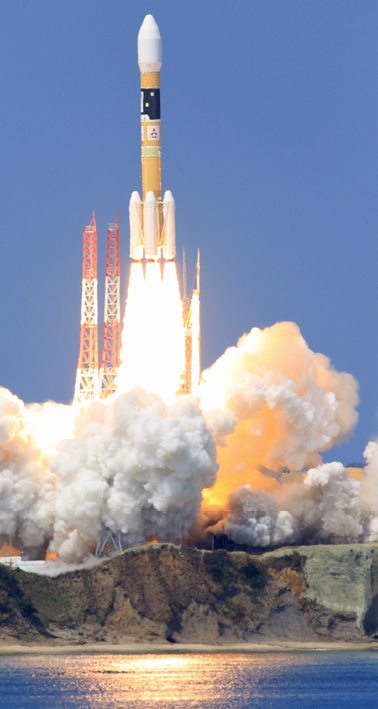
The liftoff of H-IIA Flight No.35 in August of 2017. Photo is courtesy of JAXA/MHI.
This feature is highly valued by the company’s international customers, such as Inmarsat and the United Arab Emirates (UAE) government, the latter having placed a launch order with MHI.
One of the reasons why MHI maintains the high success rate and Launch Schedule Assurance is rooted in the firm’s “Quality Management System.” Experienced engineers and inspectors continuously monitor about 5,000 points of key hardware parameters from the very early stage of manufacturing to final preparation for launch.
If the slightest singularity is monitored in the data — even well within the technical requirements of the H-IIA specification — the reason for the singularity is immediately evaluated to determine the root cause. Such focus enables MHI to maintain the highest quality of vehicle and operations work.
During the last launch campaign — H-IIA Flight No.35 — a slight singularity was located in one of the propulsion system’s pressure data just two hours before liftoff, an irregularity that was well within the technical requirement. MHI held the launch for a few hours to determine the reason for that singularity.
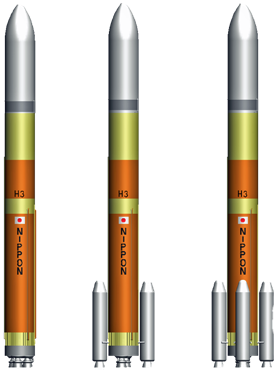
The MHI H3 Launch Vehicle family.
The root cause of the singularity that had initiated the hold could not be uncovered and the company decided to slip the launch day. That vehicle anomaly that caused this was the first time in six years such had occurred to MHI. Since then, staff has literally worked day and night to minimize the launch delay and have managed to uncover the root cause and to then recover the system within just one week.
MHI is quite proud of the staff members who were so determined and dedicated in correcting the problem and obtaining a full recovery — MHI always has in mind to place the highest value on customer satisfaction. Throughout this launch campaign, MHI is confident that the engineering team’s know-how and expertise have been raised to a much higher level.
Important Essence of the H3 Development
The root cause of the singularity that had initiated the hold could not be uncovered and MHI decided to slip the launch day. That vehicle anomaly that caused the delay was the first time in six years such had occurred to MHI. Since then, staff has literally worked day and night to minimize the launch delay and have managed to uncover the root cause and to then recover the system within just one week.
MHI is quite proud of the staff members who were so determined and dedicated in correcting the problem and obtaining a full recovery — MHI always has in mind to place the highest value on customer satisfaction. Throughout this launch campaign, MHI is confident that the engineering team’s know-how and expertise have been raised to a much higher level.
• Affordable pricing
• A safe environment conditions for satellites
• Convenient Launch Services (launch will occur within 12 months of a signed contract)
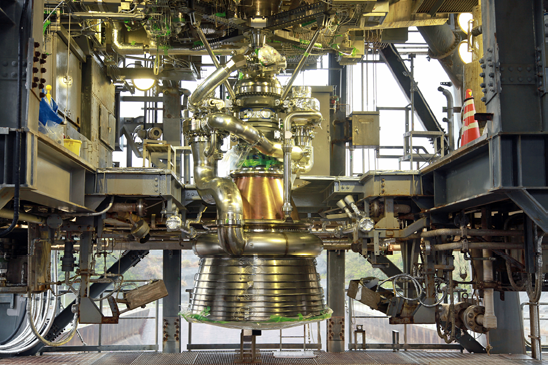
Engineering model of LE-9. Photo is courtesy of JAXA.
A truly new development item for the H3 is the first stage engine called LE-9. Save for the first stage engine, system development activities have been targeted to reduce overall costs from the current H-IIA heritage.
In example, the solid rocket booster gimbal system has been removed in H3 thanks to higher thrust of clustered LE-9 main engines that are now attached at the tail of the core vehicle.
For the newly developed LE-9, the engine cycle is identical to the current H-IIA second stage engine. This is simpler than the current first stage engine cycle that has been applied on LE-7A.
The number of parts on LE-9 have also been reduced by 70 percent over the current LE-7A and that is the key feature enabling such impressive cost reductions.
With these features, the ”LE-9” Engineering Model has now been designed and manufactured, with hot-firing tests already successfully conducted on schedule.
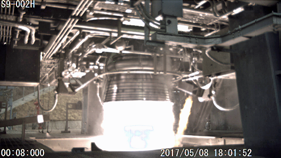
Hot firing tests of LE-9. Photo is courtesy of JAXA.
Through the implementation of the upcoming H3 Launch Services, MHI be able to make significant contributions to institutional and international customers. With the technical heritage of H-IIA launch Services, such as more than a 97 percent success rate with more than 90 percent of on-time launch rate, the company will be able to provide many more customer-oriented Launch Services with the H3, including a lower pricing perspective.
With the aforementioned services and products integrated firmly within MHI’s offerings to the launch community, considerable success will continue to gain momentum within the firm’s business portfolio.
http://h2a.mhi.co.jp/en/index.html
Phone: 81-3-6716-311 (Main)


